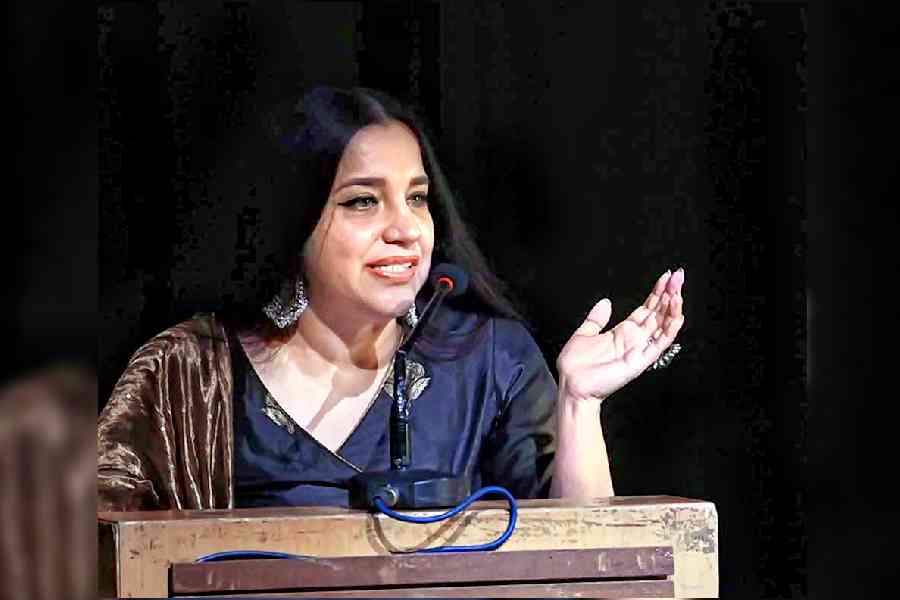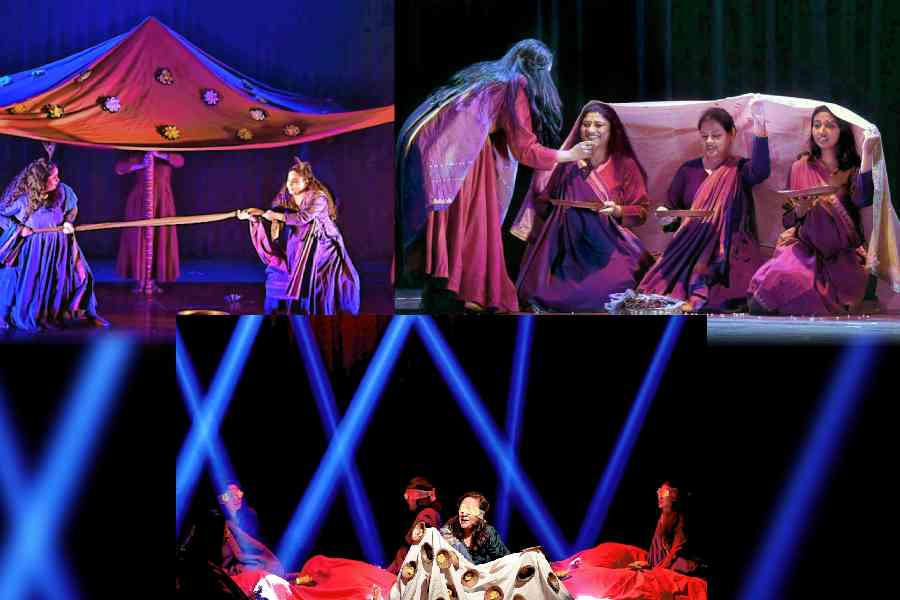Ramanjit Kaur is known for her mastery in channelising the power of imagery in her production to create an everlasting impact on the stage and The Dice of Desire, presented in association with Faces, followed the same technique and created an act that had everyone transfixed from the moment Gandhari walked onto the stage. The all-women play that marked 20 years of Kaur’s The Creative Arts was in collaboration with Vansh Bhardwaj, an actor-director who has an outstanding oeuvre of his own. Together the two brilliant talents created a multi-lingual play that derived its inspiration from The Mahabharata. It delved deep into the psyche and known and lesser-known desires of women of the epic that affected the narrative. It introduced the audience to the complexities of Gandhari, Kunti, Ganga, Satyavati, Amba, Ambika, Ambalika, Shikhandi, Draupadi, Ahalya, Chitrangada and others through 13 performers.
The Dice of Desire took inspiration from various stories and texts written about The Mahabharata by writers like Chitra Banerjee Divakaruni, Pratibha Ray, Manish Singh Bhadauria, Narendra Kohli, Kavita Kane, Rabindranath Tagore, Anand Neelakantan, Aditi Banerjee and others and presented a story that resonates even today. “I never imagined that I will be doing an epic like Mahabharata. While doing our research we somehow kept on revisiting Mahabharata and Ramayana and the former opened a canvas which was complex and full of challenges, and we noticed that the characters had many layers. It took us a year or more as we read endless books of many authors, articles and other texts to make the script,” said Kaur who conceived the play and got Pandit Tanmoy Bose to do the music design, Mrityunjay Kumar Singh for dialogues and Daulat Vaid for light design. She added, “The reason we decided to do The Mahabharata was that when we were researching the women characters, we realised there were so many layers to them. And though they have been written about here and there like in series and plays but not all of them together. And hence we thought that let’s do a play about the desires of the women characters of Mahabharata who affected the narrative of the epic. We wanted to delve deep into their desires, knowledge, love, ambition, power, sensuality and sexuality.”
The play stands out for its depiction of a few scenes that have an indelible effect on our pictorial memory. For instance, the famous scene of Draupadi’s cheerharan. Instead of the usual drape scene, Kaur used body percussion to depict the intense emotion of rage and helplessness of Draupadi, played by multiple actors. The chorus of pakdo pakdo pakdo… chhoro chhoro chhoro... rings in the ear even after the dark and intense scene is over. “I did not relate to the cloth being pulled relentlessly in the cheerharan scene. Rather through body percussion and the chants we wanted to depict how one would feel when touched inappropriately,” said Kaur who believes that Krishna is a universal inner strength.

Ramanjit Kaur
